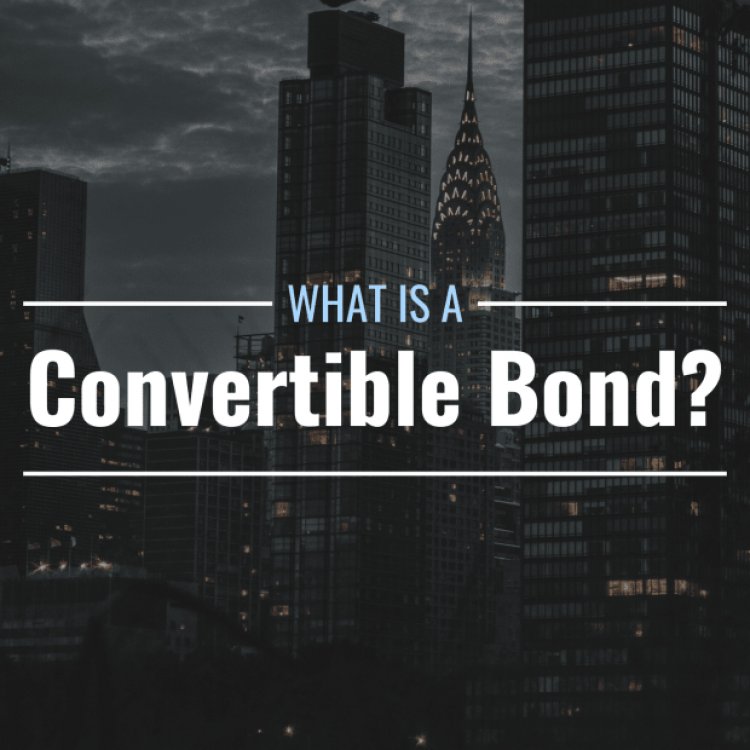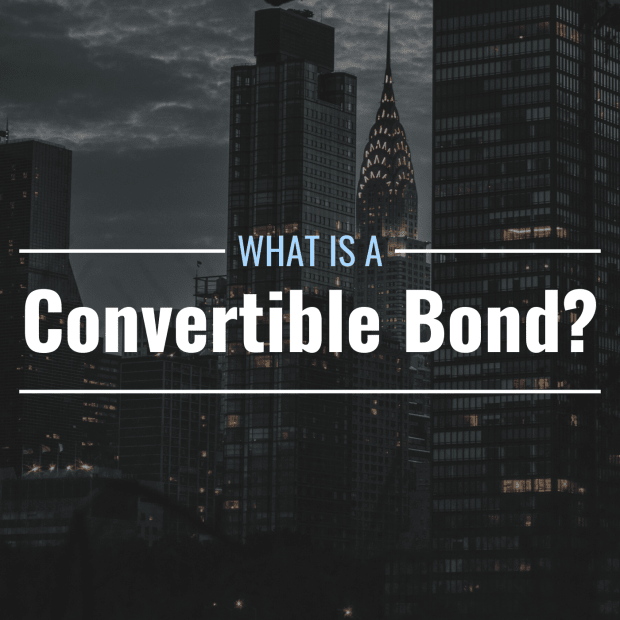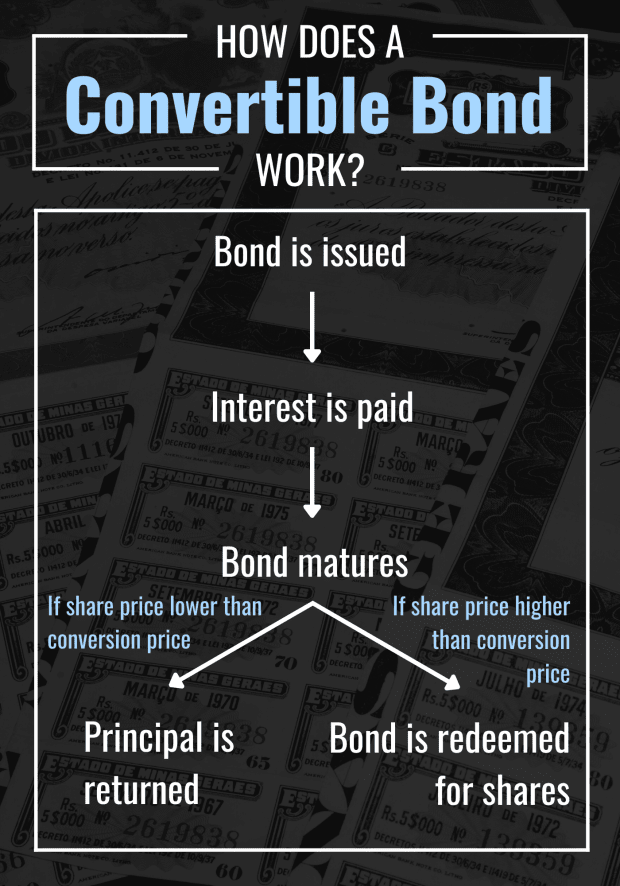What Are Convertible Bonds & How Do They Work?
What Is a Convertible Bond?A convertible bond is a type of corporate bond that can be converted into shares of common stock in the issuing company upon or before its maturity. Like traditional corporate bonds, convertible bonds may entitle their holders to coupon (interest) payments at regular ...


What Is a Convertible Bond?
A convertible bond is a type of corporate bond that can be converted into shares of common stock in the issuing company upon or before its maturity. Like traditional corporate bonds, convertible bonds may entitle their holders to coupon (interest) payments at regular intervals and can usually be redeemed for their par value (original price) upon maturity, assuming they were not already converted into shares.
In other words, the holder of a convertible bond can decide to convert it into a pre-determined number of shares of stock or have its par value returned to them upon its maturity.
Technically, convertible bonds are considered debt instruments until they are converted into shares. Because they act like debt but can be converted into equity, however, most investors consider them hybrid securities.
What Is a Conversion Ratio?
A convertible bond’s conversion ratio specifies how many shares of common stock it can be redeemed for. The higher the ratio, the more shares the bond is worth. For instance, a 5:1 convertible bond is redeemable for five shares, a 3:1 is redeemable for three shares, and so on. A convertible bond’s conversion ratio is specified in its indenture (the legally binding document that outlines the terms, rules, and provisions of the bond) when it is issued.
What Is a Conversion Price?
A convertible bond’s conversion price is the bond’s par value divided by its conversion ratio. It is also the minimum price the stock of the underlying company must reach in order for the bond to become eligible for conversion into shares.
For instance, if a convertible bond had a conversion ratio of 5:1 and a face value of $500, its conversion price would be $100 ($500/5). If the issuing company’s stock reached this price, the bondholder could redeem their bond for stock.
What Are the Advantages of Convertible Bonds for Investors?
Convertible bonds can be advantageous for investors because they offer the safety and stability that come with traditional bonds in the form of fixed-income payments and an eventual return of principal.
Unlike traditional bonds, however, they can also be exchanged for shares if the underlying company performs well and its share price increases to a level that makes conversion more valuable than the bond’s principal and remaining interest payments. In other words, convertible bonds provide their holders the security of bonds but the upside potential of stock. 
Convertible Bond Example
Imagine a convertible bond with a par value of $1,000, a coupon rate of 0.5%, and a conversion ratio of 7:1 that matured in 5 years. When the bond is issued, the company’s stock trades at $90 per share, so 7 shares would be worth $630. The bond’s par value and remaining interest payments, at this point, would be worth $1,025.
If, 4 years later, the company’s stock is trading at $150 per share, 7 shares would be worth $1,050 ($25 more than the bond would paid in interest if held until maturity), so it would be to the investor’s advantage to redeem the convertible bond for the 7 shares and resell them rather than waiting to receive the remaining coupon payments and their $1,000 principal.
If, on the other hand, the bond’s maturity was approaching, but the company’s stock was trading at only $125 per share, 7 shares would be worth only $875, so it would be in the bondholder’s best interest to hold the bond until maturity and have their principal returned rather than converting it into shares.
Why Do Companies Issue Convertible Bonds?
Companies often need to raise capital, and when they do, they have two options: They can create and sell new equity (stock) or they can borrow money from investors or a bank.
By issuing corporate bonds, a company borrows money from investors that it will have to pay back later with interest. By issuing stock, on the other hand, a company can raise money without taking on debt (although creating shares does cost money), but creating new stock dilutes the ownership value of all of its existing shares, which doesn’t look great to investors and can result in a drop in share price.
Both of these options come with pros and cons, but convertible corporate bonds offer a sort of “best of both worlds” middle ground. Because convertible bonds come with the option to redeem for shares, investors are willing to accept a lower coupon rate for their loaned money. In other words, if a corporation issued two identical bonds, one convertible and one traditional, it could pay a lower interest rate on the convertible bond, meaning it would pay less in total for the borrowed money.
Additionally, because convertible bonds can but don’t necessarily have to turn into new shares of stock, the issue of share dilution is pushed into the future. If holders of convertible bonds don’t redeem them for shares, no dilution occurs. If they do, dilution occurs sometime in the future, by which point the company hopes to have increased its value enough to offset the effects of the share dilution.
Types of Convertible Bonds
There are several unofficial “types” of convertible bonds, the features of which are detailed below. The above sections primarily describe “vanilla” convertible bonds, which are the most common.
Vanilla
Vanilla convertible bonds are the simplest and most common. They may or may not pay interest (most do), and if the underlying company’s stock reaches the conversion price, their holder may exchange them for shares at their specified conversion rate on or before maturity. Once the bond is converted to shares, interest payments cease, and the principal no longer has to be repaid to the former bondholder.
Mandatory
Unlike vanilla convertibles, mandatory convertible bonds must be redeemed for shares. They convert automatically on a certain date regardless of the share price of the underlying company. Because conversion isn’t optional, holders of mandatory convertibles are compensated with a higher interest rate.
Reverse
Like vanilla convertibles, reverse convertible bonds can either be converted into shares or not, but in this case, the decision is made by the bond issuer—not the bondholder. In other words, upon a reverse convertible’s maturity, the issuing company has the option to either repay the bondholder’s principal or provide them with the number of shares specified by the bond’s conversion rate.
Frequently Asked Questions (FAQ)
Below are answers to some of the most common questions investors have about convertible bonds.
Where Can You Buy Convertible Bonds?
Convertible bonds can be purchased through certain brokerages that employ convertible bond specialists. Unfortunately, many popular brokerages—including Fidelity, TD Ameritrade, and Robinhood—do not offer individual convertible bond investments to account holders.
However, investors can gain portfolio exposure to the convertible bond market by investing in a convertible bond-themed ETF like the iShares Convertible Bond ETF (ICVT) or the SPDR Bloomberg Barclays Convertible Securities ETF (CWB).
What Sorts of Companies Offer Convertible Bonds?
Convertible bonds are most often issued by companies that have less-than-ideal credit ratings but high growth potential. This may include startups and younger, highly leveraged companies in growth phases.
What Is a Conversion Premium?
The amount by which a convertible bond’s price exceeds the present value of the shares it can be converted into is known as its conversion premium.
What Is Convertible Bond Parity?
Convertible bond parity occurs when the value of a convertible bond is equal to the present value of the shares it can be redeemed for.
Are Corporate Bonds Callable?
Many corporate bonds are callable, meaning the issuing company can “call” and redeem the bond before it matures. When this occurs, the issuer returns the bondholder’s principal, and interest payments cease.
What Are Convertible Bond Funds?
Convertible bond funds are ETFs or mutual funds that focus on investing in convertible bonds.
What's Your Reaction?



























































